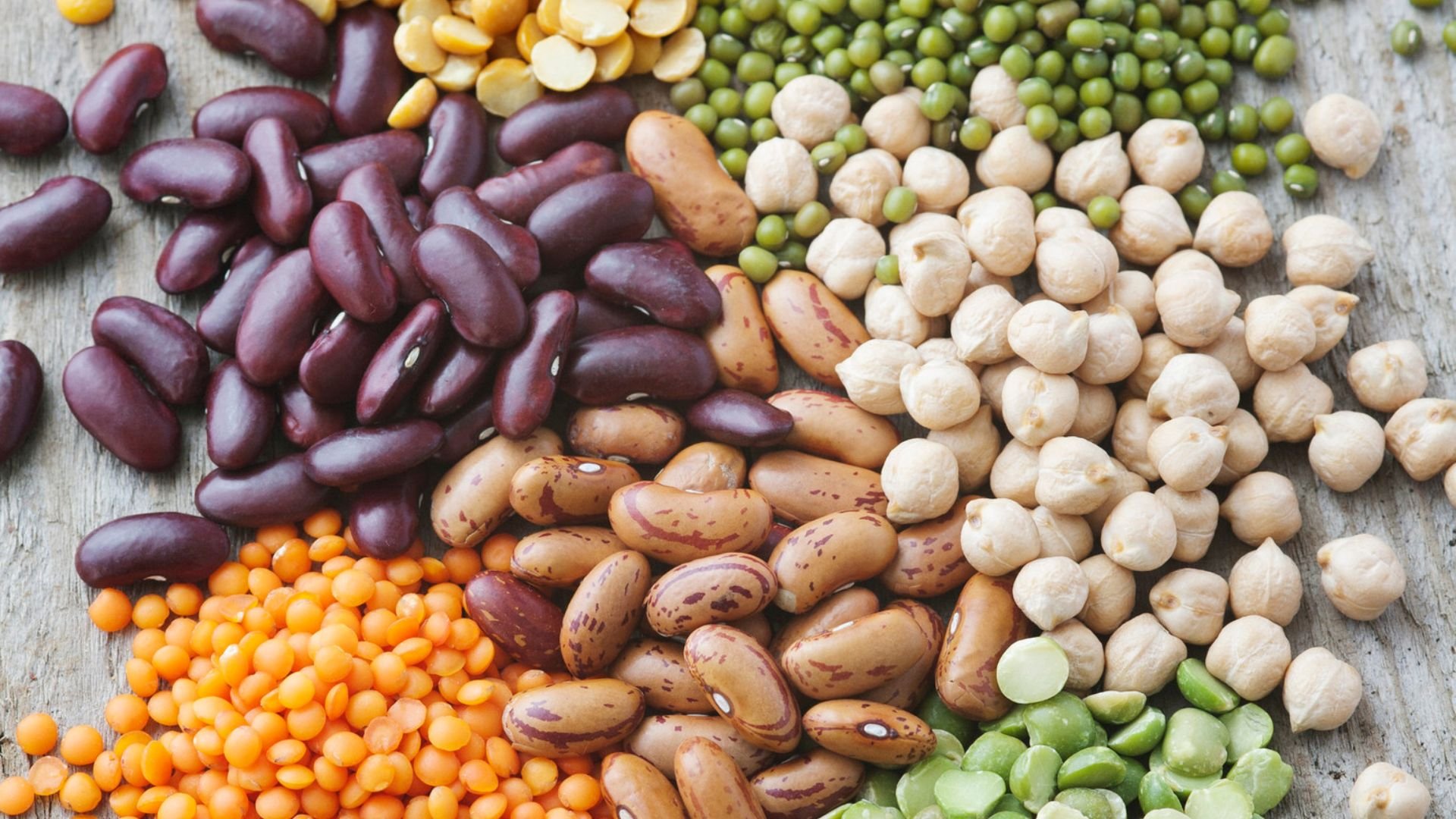How to Starve Bad Gut Bacteria
Let’s make this clear - there is nothing that you can do to selectively starve bad gut bacteria. The best thing you can do is fuel your good gut bacteria to allow them to thrive, creating a more diverse and healthier gut microbiome.
Our gut microbiota is influenced by many factors, including diet, exercise, previous food poisoning or infections and antibiotics to name a few.
Can certain foods starve bad gut bacteria?
No, there are no foods that you can eat to selectively starve bad gut bacteria. However, there are plenty of foods that can increase the diversity of our gut microbiota and the levels of bacteria that we know have a positive impact on our health.
This section will tell you how you can switch up your diet to improve the diversity of your gut microbiota.
Aim for 30 plant points per week
One large study found that people who ate 30 different plant-based foods per week had a more diverse gut microbiome than people who ate 10 different plant-based foods.
Plant-based foods provide dietary fibre, which our gut bacteria feed off via a process called fermentation. We talk about this in more detail further down in the article.
30 plant-based foods might sound like a daunting number to aim for, but, with a little planning, it can be achieved.
Top tips for meeting your 30 plant-based foods per week goal:
Choose a variety of fruits and vegetables - try adding in a few new ones each week! Buying frozen ‘mixed’ bags is another great way to add in extra options.
Base your meals on different carbohydrates from the week and not just pasta and rice. Try using buckwheat, oats, quinoa, or even switching white bread to wholegrain bread.
Swap half of your minced meat for beans (even better if using mixed beans for variety), lentils or chickpeas in curries, stews or pasta dishes.
Add mixed nuts and seeds as a topping to your porridge, yoghurt, soup or roasted vegetables.
Choose prebiotic fibres
Prebiotics are defined as “substrates selectively utilised by host microorganisms that confer a health benefit”. This means that for a food to be labelled as a prebiotic, there needs to be research showing that it has a positive impact on human health.
Research has demonstrated that certain prebiotics can increase levels of Bifidobacteria, a well-researched type of good gut bacteria.
Choosing a wide range of fibres to meet your 30 plant-based foods per week will help you pack some prebiotics into your diet. However, not all fibre-containing foods are prebiotics.
Examples of foods that contain prebiotics include:
Vegetables containing prebiotics
Onion
Garlic
Leeks
Fruit containing prebiotics
Prunes
Apricots
Dried melon
Other foods containing prebiotics
Beans
Lentils
Chickpeas
Rye
Nuts including almonds and cashews
Prebiotics are a great source of fuel for our gut microbes. Unfortunately for some people though, this can cause troublesome bloating. Working with a registered dietitian can help you identify which ones may be an issue for you.
When increasing your fibre intake, it is important to do this gradually to prevent triggering gut symptoms.
Include fermented foods in your diet
Fermented foods are foods and beverages made through microbial growth and enzyme activity in food.
Fermented foods include:
Kefir
Kimchi
Kombucha
Sauerkraut
The fermentation process can increase the production of beneficial compounds, including vitamins and beneficial organic acids. It is thought that fermented foods may improve the gut microbiome, but sadly there is limited evidence that supports this.
Fermented foods may increase the microbial or probiotic activity of a food. However many commercially fermented foods have been pasteurised, which kills any live bacteria that were previously in the food. This means not all fermented foods can be called a probiotic.
For fermented food to be classified as a probiotic, there needs to be proven amounts of a strain-specific microbe (that has been proven to have health benefits) in the final food product.
Some fermented grains and vegetables are prebiotics, and therefore these fermented foods may increase levels of good gut bacteria this way.
Which other factors affect the balance of good to bad gut bacteria?
Diets as well as supplements and medication can affect the balance of microbes, including bacteria, in our gut.
Can the low FODMAP diet starve good gut bacteria?
If you have irritable bowel syndrome (IBS), you may have heard of or perhaps already tried following the low FODMAP diet. It is important to know that the diet runs in three phases: restriction, reintroduction and personalisation.
It is essential to follow each stage as FODMAP restriction has been shown to reduce levels of Bifidobacteria. This is because FODMAPs are sources of prebiotics, so our good gut bacteria, including Bifidobacteria, feed off of them.
The low FODMAP diet is discussed in more detail in The Gut Feeling app.
Can probiotics encourage gut bacteria?
No, probiotics will not directly starve bad gut bacteria. However, as with fibre and prebiotics, they can be used to increase the levels of desirable gut bacteria.
A probiotic will only be useful if your gut is lacking in the strain of bacteria that the probiotic contains, so you can’t pick a random probiotic off the shelf in the hope that it will work for you.
So, when choosing a probiotic, you should take one that contains a strain that has been shown to improve the symptoms or condition that you are managing. A registered dietitian or healthcare professional can advise you on which probiotic might be useful for you.
Can antibiotics kill good gut bacteria?
Antibiotics work by killing microbes in your gut and therefore can disrupt your gut microbiome by reducing diversity. This can cause antibiotic-associated diarrhoea as a side effect.
For some people, this disturbance may be short-lived, whereas other people may not see their gut microbiome return to how it was before the antibiotics.
A course of specific probiotics may help to reduce the level of disruption of the gut microbiome and prevent antibiotic-associated diarrhoea. Culturelle® Health and Wellness Capsules and Optibac
Probiotics Every Day EXTRA are examples that contain strains of bacteria shown to prevent antibiotic-associated diarrhoea.
The gut microbiome
So we’ve told you how you can improve your gut microbiome - but what is the gut microbiome, and how does it relate to good and bad bacteria
What is the gut microbiome?
The gut microbiome is the name for the genetic material of your gut microbiota. The gut microbiota refers to the trillions of microbes living in your gut, and collectively they weigh up to 2kg!
The microbes in your gut include:
Bacteria
Viruses
Fungi
Protozoa
Your gut microbiome is unique to you and is influenced by many factors, including your diet, genetics, medications and more.
What do your gut microbes do?
Your gut microbes are busy working away on plenty of jobs. One of their main duties is to digest the fibre that you eat through a process called fermentation, as mentioned earlier. This provides them with a source of energy. Without this process, our body would not get the same benefits it gets from dietary fibre.
Thousands of products are produced by our gut bacteria as they ferment on dietary fibre, including short-chain fatty acids (SCFAs).
SCFAs have the following benefits:
Help to maintain the integrity of the gut lining
Improve immune function
Suppress inflammation and carcinogenesis
Other things your gut microbes do include:
Retrieval of nutrients from food
Produce certain vitamins
Compete with pathogens for space in your gut
This won't be it though - there is still so much that we don’t know about our gut microbes and their functions.
Why is a diverse gut microbiome a good thing?
Your gut microbiome has so many jobs to do, that it makes sense to say that more workers are better and less likely to be able to meet the required workload.
Different microbes can still share the same functions - so this means they can step in for one another if the other isn’t working properly.
Is the gut microbiome associated with any health conditions?
Yes, a disrupted balance of the gut microbiota, known as dysbiosis, has been observed in the following:
Obesity
Malnutrition
Neurological disorders
Cancer
Dysbiosis may look like a reduction in gut bacteria that have been shown to provide positive health benefits or increased numbers of those associated with negative outcomes. However, there is no definition of dysbiosis yet as there is still so much that we don’t know about the gut microbiota.
Which gut microbes are good and which are bad?
There is still a huge number of gut microbes that haven’t been named, let alone understanding their function in the gut and health.
However, there are a small handful of microbes that are thought to be beneficial and not so great. This is from research that has shown associations between certain types of microbes and the prevalence of a disease.
For example, low levels of Bifidobacteria have been seen in people with IBS.
Are gut microbiome tests helpful?
Despite gut microbiome tests being readily available online, they unfortunately do not tell us that much about our gut microbiome in the grand scheme of things.
The reason for this is that the gut microbiome is still in its infancy when it comes to research, making the results of a test difficult to interpret. We just don’t know what the perfect gut microbiome looks like.
Gut microbiome tests might be useful in the future, but for now, it’s best to listen to your gut by taking note of your bowel habits and any other gut symptoms.
Takeaway
There is no magic way to selectively starve bad gut bacteria. However, there are steps you can take to improve the diversity of good gut bacteria in your gut.
Aiming for 30 different plant-based foods per week, including a selection of prebiotic fibres, fermented foods and probiotics (especially if on a course of antibiotics) are great ways to do this.
Improving the diversity of your gut microbiome using the above tips will increase the likelihood of you carrying microbes that have beneficial functions in the gut. We know that this is associated with better health outcomes.
Making these steps and monitoring your gut symptoms is a better approach than paying for a gut microbiome test, as unfortunately, the science is not there to be able to interpret them yet.
If you are struggling with gut issues, you may find it helpful to try The Gut Feeling app. It’s designed by ex-gut sufferers alongside the experts (Dietitians, Doctors, Gastroenterologists..) to help you find relief from your gut issues from less than 10 minutes a day.
References
Dwyer, E. (2016) Dietary fibre series - prebiotic fibre, Prebiotic fibre - A blog by Monash FODMAP | The experts in diet for IBS - Monash Fodmap. Available at: https://www.monashfodmap.com/blog/dietary-fibre-series-prebiotic-fibre/ (Accessed: 12 December 2023).
Fu, J. et al. (2022) ‘Dietary fiber intake and gut microbiota in human health’, Microorganisms, 10(12), p. 2507. doi:10.3390/microorganisms10122507.
Jandhyala, S.M. (2015) ‘Role of the normal gut microbiota’, World Journal of Gastroenterology, 21(29), p. 8787. doi:10.3748/wjg.v21.i29.8787.
Lozupone, C.A. et al. (2012) ‘Diversity, stability and resilience of the human gut microbiota’, Nature, 489(7415), pp. 220–230. doi:10.1038/nature11550.
McDonald, D. et al. (2018) ‘American Gut: An open platform for citizen science microbiome research’, mSystems, 3(3). doi:10.1128/msystems.00031-18.
Qin, J. et al. (2010) ‘A human gut microbial gene catalogue established by metagenomic sequencing’, Nature, 464(7285), pp. 59–65. doi:10.1038/nature08821.
Ramirez, J. et al. (2020) ‘Antibiotics as major disruptors of gut microbiota’, Frontiers in Cellular and Infection Microbiology, 10. doi:10.3389/fcimb.2020.572912.
Rodiño-Janeiro, B.K. et al. (2018) ‘A review of microbiota and irritable bowel syndrome: Future in therapies’, Advances in Therapy, 35(3), pp. 289–310. doi:10.1007/s12325-018-0673-5.
W;, F.J.Y.Y. (no date) Dietary fiber intake and gut microbiota in human health, Microorganisms. Available at: https://pubmed.ncbi.nlm.nih.gov/36557760/ (Accessed: 12 December 2023).
Vasant DH, Paine PA, Black CJ, et alBritish Society of Gastroenterology guidelines on the management of irritable bowel syndromeGut 2021;70:1214-1240.







